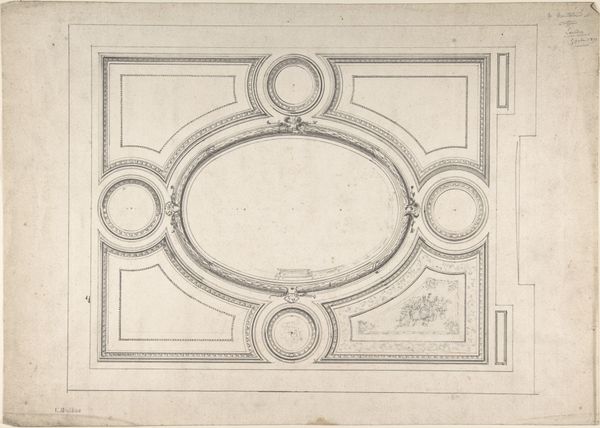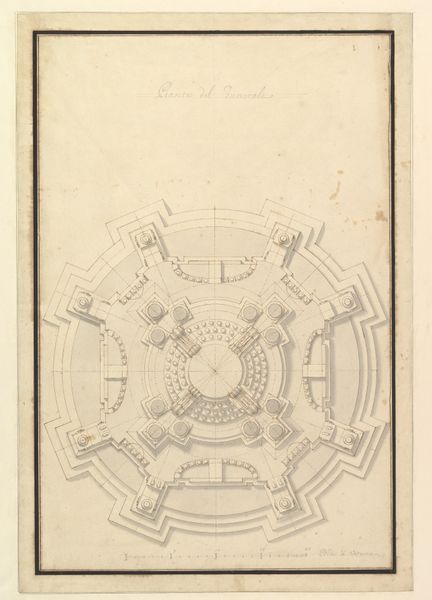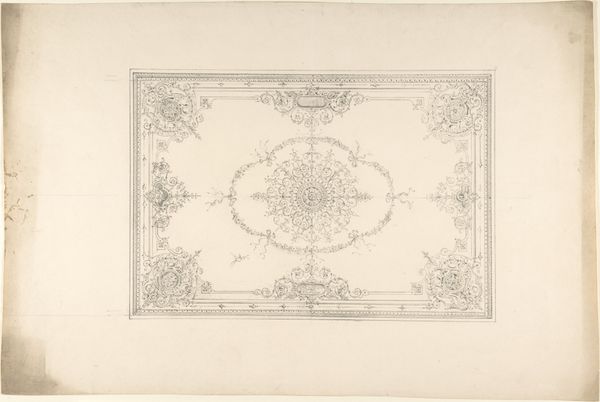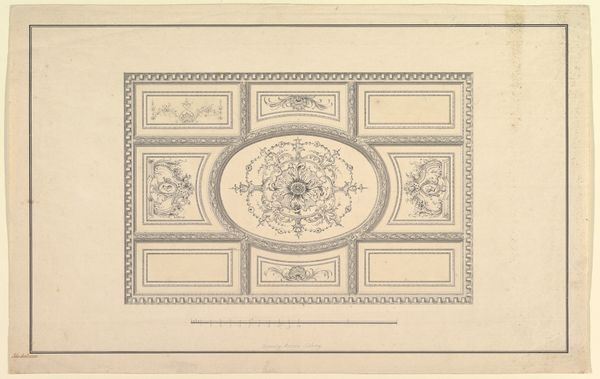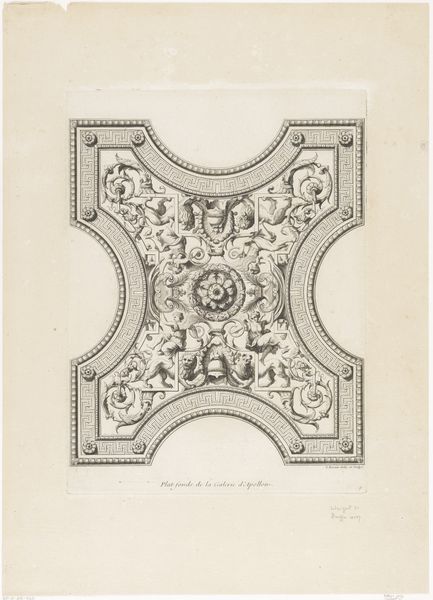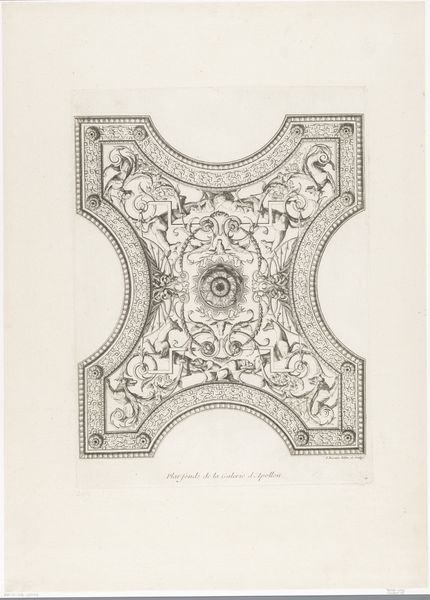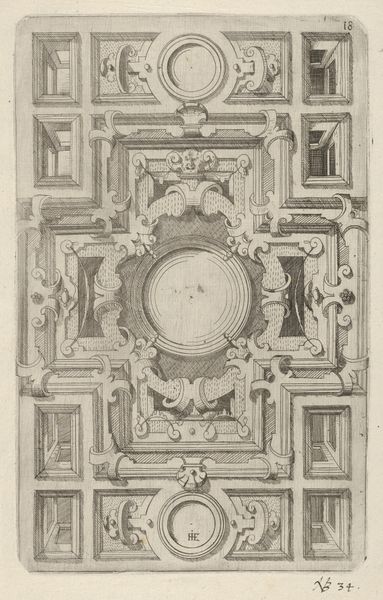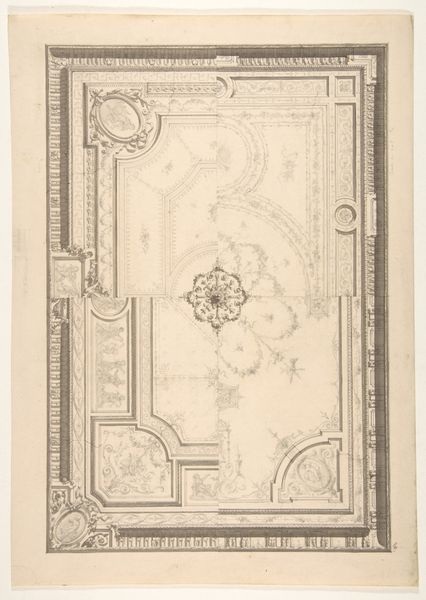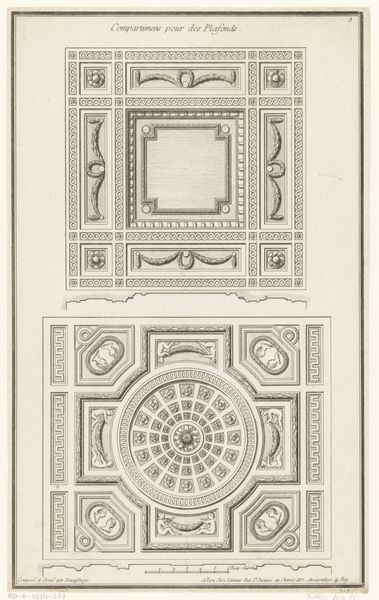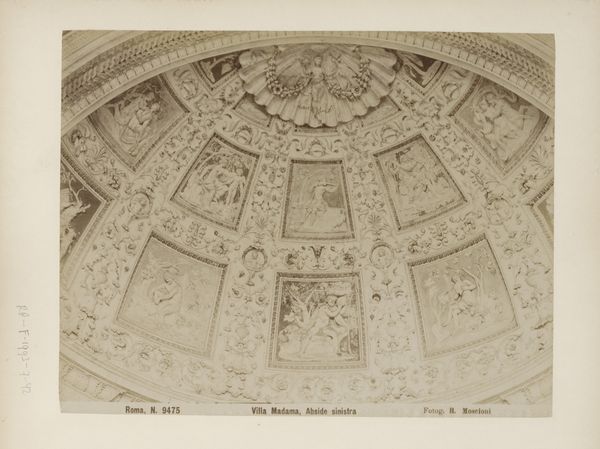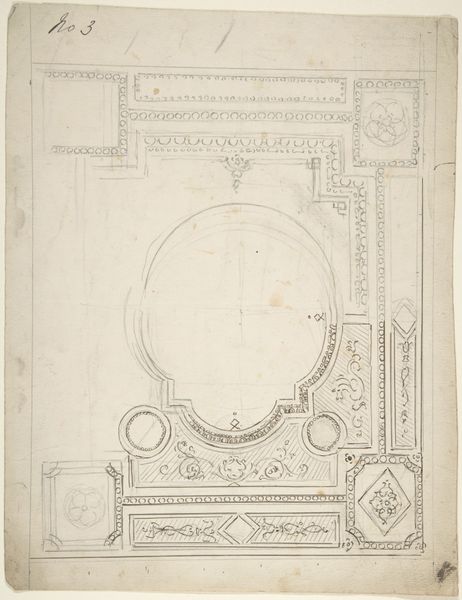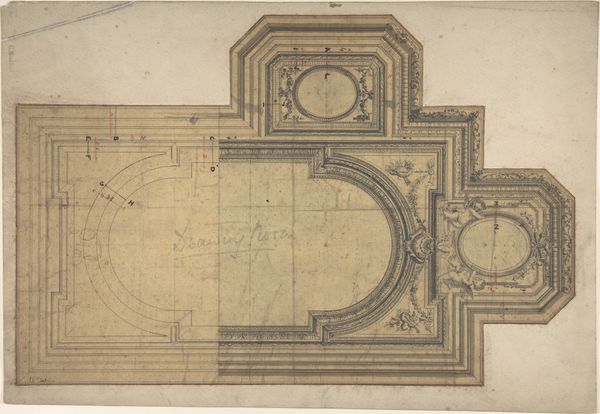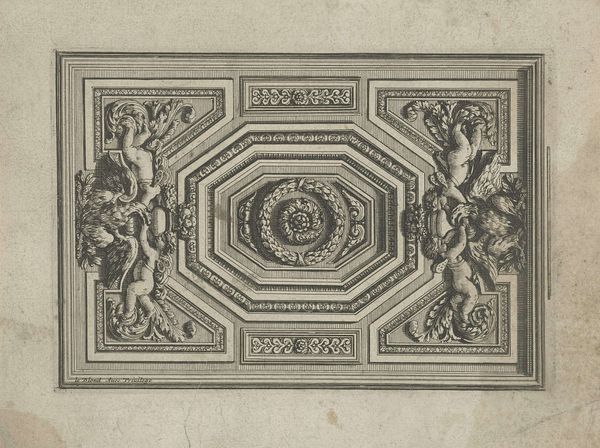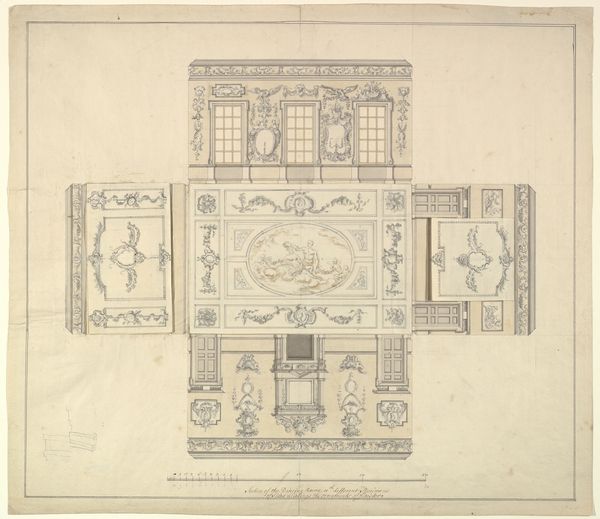
Design for a ceiling with trophies and a trompe l'oeil coffers 1830 - 1897
0:00
0:00
drawing, print, paper
#
drawing
# print
#
landscape
#
paper texture
#
paper
#
classicism
#
trompe-l'oeil
#
academic-art
#
decorative-art
Dimensions: Overall: 23 5/8 x 18 7/8 in. (60 x 48 cm)
Copyright: Public Domain
Editor: This is "Design for a ceiling with trophies and a trompe l'oeil coffers," dating from 1830 to 1897, by Jules-Edmond-Charles Lachaise, rendered with drawing and print on paper. The composition strikes me as incredibly ornate. What can you tell me about this design? Curator: Looking at Lachaise's ceiling design, I immediately consider the social context of its creation. Trompe-l'oeil effects were frequently used to give the illusion of depth and grandeur, often masking simpler or cheaper materials. The drawing itself, a print on paper, signifies mass production techniques even in what appears to be a unique, decorative work. It begs the question: was this design meant for a wealthy patron, or could its illusion be more widely applied? Editor: That's interesting – thinking about illusion versus reality in the materials used. Were these kinds of ceiling designs common then? Curator: They certainly evoke the luxury of aristocratic spaces. But how does this two-dimensional rendering transform the labor required for its construction? Are the implied coffers and trophies a critique of opulence or a democratization of it, accessible through reproducible paper designs? And let’s consider what this ceiling hides; What’s the physical infrastructure up there? Editor: So you’re suggesting the material making up a fancy design could be viewed as available through mass production? That really changes my perspective! I was so focused on the artistry, I didn't think about the industrial aspect of decorative art. Curator: Precisely! Lachaise's work here blurs the boundaries between elite craftsmanship and wider social consumption through design and printing. What are we consuming when looking at this? Is this design merely aesthetic or is it also revealing larger economic conditions of that period? Editor: I learned that even ornamental designs can expose socio-economic aspects about their production and use! Curator: And hopefully it makes you question what we mean by "art" versus design when we consider both within a broader landscape of materials and making.
Comments
No comments
Be the first to comment and join the conversation on the ultimate creative platform.
